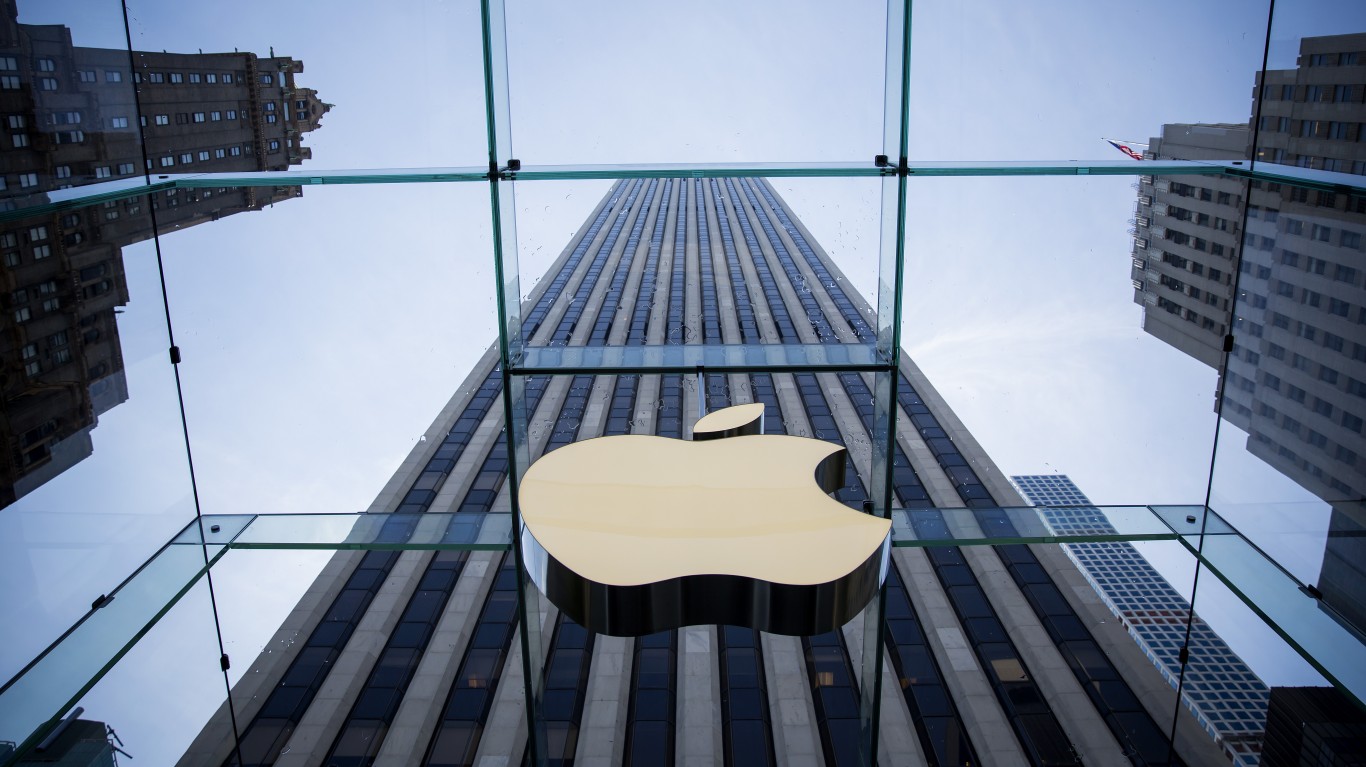Technology
Investors in Apple Stock Shouldn’t Forget the Computers

Published:
Last Updated:

The iPhone gets all the attention, but investors shouldn’t forget the other products produced by Apple Inc. (NASDAQ: AAPL). The Cupertino, California-based tech giant recently launched its new 13-inch Macbook Pro, to mostly positive reviews.
Apple remains a Wall Street winner. Shares of Apple were trading near their 52-week high on Monday. It’s up 9.3% year to date, compared with the S&P 500 (down 5.46%).
According to analysts, the Apple price target is $301.68. Last week, Bank of America analyst Wamsi Mohan raised his target to $340. He noted that Apple’s large user base for both phones and computers should continue to drive sales of services and accessories.
Steve Jobs made his mark of course with the Apple computer, a revolutionary product introduced in 1976 as a kit (the Apple I) that forever changed personal computing. But over time, desktops and laptops have become a smaller part of the company’s portfolio.
In 2019, Mac computer sales accounted for just 10% of the company’s total revenues. They represented 86% of revenues in 2000.
The big seller now of course is the iPhone, which Jobs introduced in 2007, a few years after the iPod music device. The iPad tablets came on the scene in 2010, and the first Apple Watch made its debut in 2015 under Tim Cook’s leadership. And Apple services businesses (including apps, music and streaming video) account for a growing share of revenues.
In the March quarter, iPhone revenue declined 7% year over year to $29 billion. That’s not surprising considering the global economy’s drop. But the phone line still accounted for over half of the company’s total revenues for the quarter.
Desktop and laptop sales have slumped in recent years, as powerful phones and tablets have taken up more market share. Many of the tasks once done solely on computers can now be easily done on portable devices.
In emerging markets like India, millions of new Internet users skipped the whole computer experience. Their first and only exposure to the Internet has been through smartphones.
But in the United States, most households still use a desktop or laptop. Apple sells premium products in this space, which are attractive to families with more disposable income.
Reviewers like its latest release, the 13-inch Macbook Pro. Tom’s Guide said the new model is “one of the best laptops you can buy.”
“To make a better laptop than this Apple will have to radically redesign the machine, so this feels like the last great version of a long-running model,” said a reviewer in The Guardian. “It’s not exciting, nor does it reinvent the wheel but it is great -– the 13-inch MacBook Pro many have been waiting for.”
The new Mac replaces Apple’s old Butterfly keyboard design with the new Magic design. Critics said the old design was prone to malfunctions, and Apple has been phasing it out.
It will be interesting to see how the new laptop sells in the current environment. Starting at $1,299, the Macbook Pro sits in the middle of Apple’s laptop product set. Best Buy is currently offering the entry-level model even cheaper, at $1,099.
The Macbook Air is at the lower end, starting at $999. At the top sits the 16-inch Macbook Pro, starting at $2,399.
Apple’s desktops range in price from $1,099 to $5,999 and up.
If unemployment remains high, analysts expect consumers to postpone major purchases, including computers. Those who do shop may be drawn to cheaper alternatives, such as Chromebooks, machines running the Chrome operating system from Google, a unit of Alphabet Inc. (NASDAQ: GOOGL). Those devices are typically cheaper than Apple machines and many PCs that use the Microsoft (NASDAQ: MSFT) operating system.
The tech press dinged Apple on Monday for doubling the price of RAM upgrades for the entry-level model. The MacRumors publication discovered that the cost of upgrading the new 13-inch Macbook Pro from 8GB to 16GB of memory went from $100 to $200. In Europe, the upgrade jumped from €125 to €250.
“It’s extremely rare for Apple to adjust pricing so soon after launch, suggesting an unexpected increase in Apple’s costs being passed along to consumers,” according to MacRumors.
Analysts think the price hike could be a result of coronavirus-related pressures on the supply chain. Sales might be going so well that the company ran through components more quickly than expected.
“Whether it comes down to market disruption, scarcity or something else, the $100 increase will likely be frustrating to prospective customers,” Engadget noted. “8GB of RAM is sufficient for tasks like web browsing, email and using productivity apps, but if a customer is hoping to use their MacBook Pro for anything more resource-intensive, like graphic design or video editing, the upgrade to 16GB is arguably a necessity.”
In the next earnings period, analysts will be watching to see if the more expensive upgrade impacts sales.
Thank you for reading! Have some feedback for us?
Contact the 24/7 Wall St. editorial team.